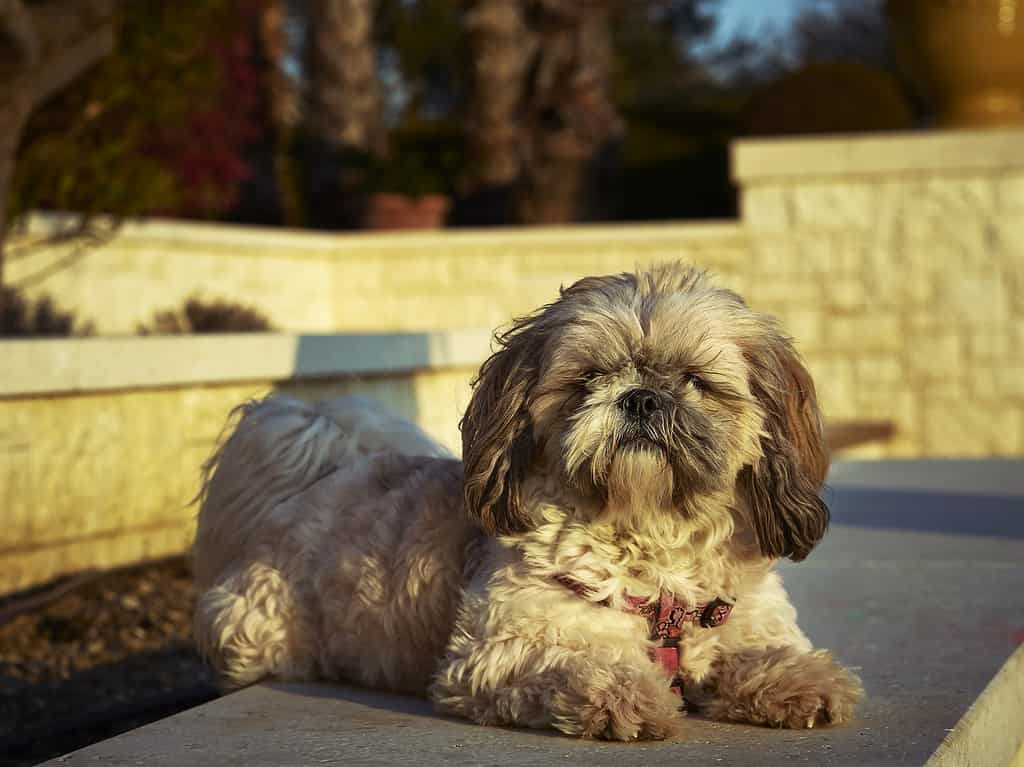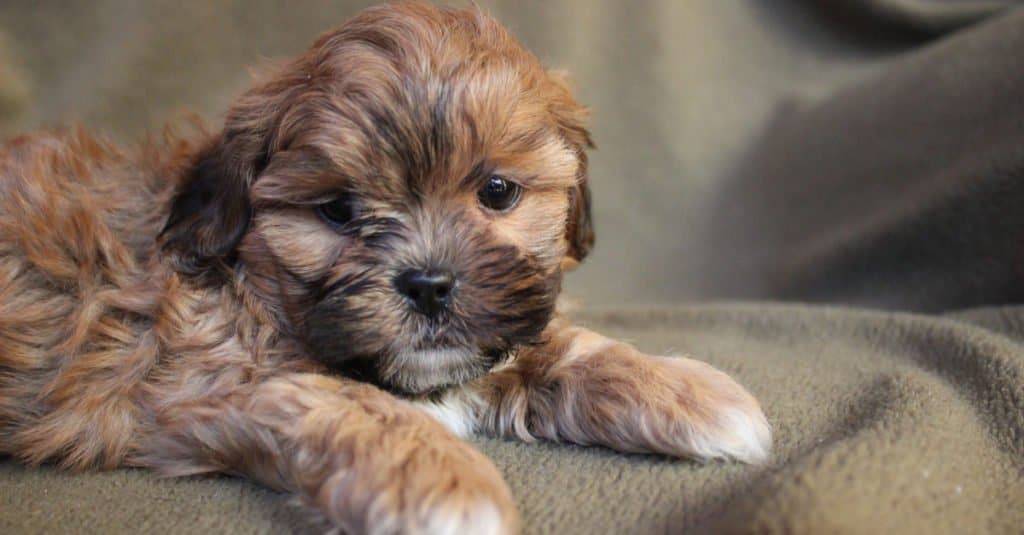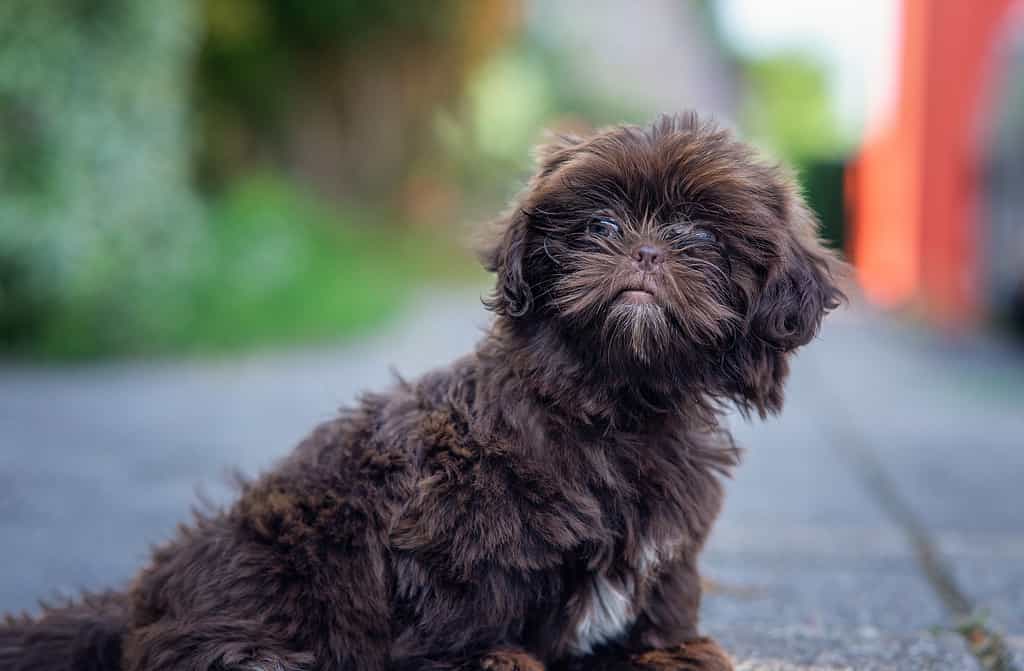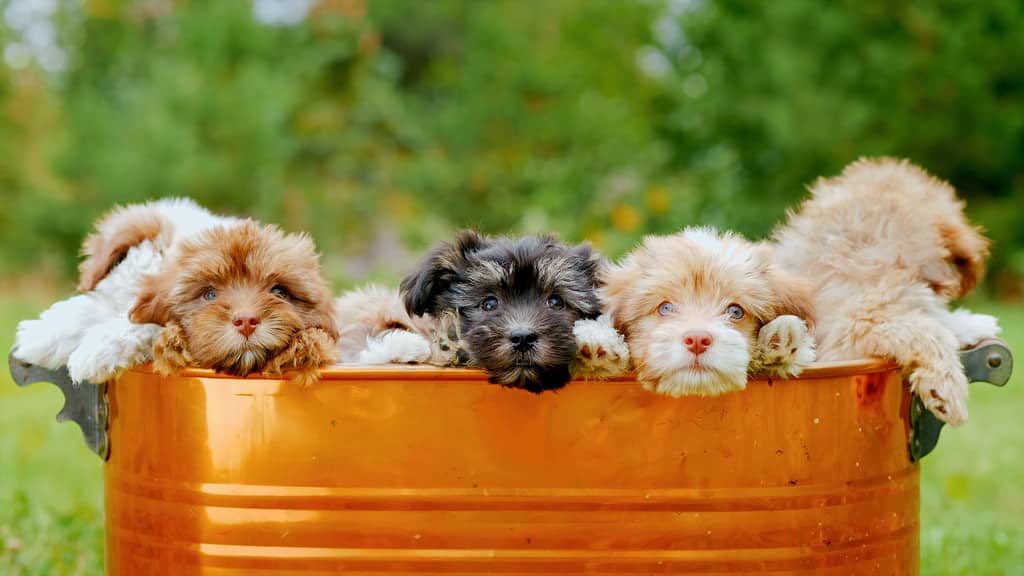Meet the Shihpoo: Breed Characteristics of This Cross of a Shih Tzu and Poodle
Here are the key characteristics of the shihpoo breed.
| Fact Type | Value |
|---|---|
| Preferred temperature | Average |
| Shedability | 1 |
| General health | 3 |
| Size | 1 |
| Energy level | 3 |
| Exercise needs | Low 30 minutes daily |
| Friendly with other dogs | High – Agreeable and enjoys other dogs |
| Family and kid-friendliness | 3 – Indifferent towards children |
| Trainability and obedience | 3 |
| Temperament | Friendly, playful, and affectionate |
| Yappiness and barking | Moderate – Average barking |
| Tendency to chew | 3 |
| Pure bred cost to own | $500 – $1500 |
| Dog group | Toy |
| Used for hunting | No |
| Intelligence | 4 |
| Hypoallergenic (non-shedding) | Yes |
| Life span | 4 – Lives a long time |
| Female Weight | 8 lbs |
| Female Weight | 17 lbs |
| Male Weight | 8 lbs |
| Male Weight | 18 lbs |
| Separation anxiety | High – Likely to suffer from separation anxiety |
| Fun fact | Often nicknamed “teddy bear dog” due to their cute appearance and cuddly nature |
Shihpoo Introduction

©Mary Swift/iStock via Getty Images
The shihpoo, a charming blend of the playful shih tzu and poodle (sometimes miniature, but usually toy poodle), is a designer breed known for its affectionate and friendly demeanor. Its history is uncertain, but we do know that shihpoos originated in the United States around 20 years ago — despite shih tzu originating in China and poodle in Germany. The primary aim behind creating this breed was to have a cuddly companion with low shedding attributes, accommodating to individuals with allergies.
Although this mixed breed comes from popular parent breeds, major kennel clubs like the American Kennel Club (AKC) or the United Kennel Club (UKC) don’t officially recognize them. However, the breed has gained recognition from the American Canine Hybrid Club (ACHC) and the International Designer Canine Registry (IDCR).
Known for their lovable nature, shihpoos are often described as outgoing, happy, and trusting dogs. These traits mirror the temperament of their shih tzu parent, while their poodle lineage imparts intelligence. Typically small in size, they are a perfect companion for sitting in your lap while you watch TV, but not so much for going running with you.
Shihpoo Fun Fact
Since shihpoos are a mixed breed, puppies may exhibit different appearances. You may find a range of diverse coat colors and textures even within the same litter. However, shihpoos tend to have at least one thing in common; their appearance often resembles a teddy bear.
Their cuddly looks even earned them the affectionate nickname “teddy bear dog.” This, along with their warm and friendly nature, makes them particularly endearing to people.
The Best Dog Food for Shihpoo

©Wirestock/iStock via Getty Images
Shihpoos, with their distinctive small size and energetic temperament, require a diet that can keep up with their nutritional needs. The blend of the shih tzu and poodle genes gives this breed a unique set of dietary requirements that cater to both its physical energy levels and intelligent, active mind. With that in mind, it’s advisable to consult a veterinarian to establish a personalized feeding schedule for your shihpoo. Their age, weight, and health conditions can significantly impact their dietary needs, and there’s rarely a one-size-fits-all answer.
Shihpoo puppies require frequent meals, specifically three or four a day, to avoid hypoglycemia (low blood sugar). Their diet should be rich in protein to support their growth, development, and high energy levels.
The luxurious coat of a shihpoo benefits from a diet rich in omega fatty acids, as they promote a shiny, healthy coat and also support skin health. Moreover, as a breed known for its intelligence and active demeanor, a diet rich in high-quality proteins and fats supports its energy levels and cognitive functions.
That’s why, for shihpoos, we at A-Z Animals recommend Hill’s Science Diet Dry Dog Food, Adult, Small Paws for Small Breed Dogs. This particular dog food has superb primary ingredients, including chicken, lamb, and salmon. It also contains omega-6 fatty acids that promote a healthy coat and skin.
The kibble size is small, catering to the shihpoo’s smaller jaws; small pieces make it easier for this breed to chew and digest. Additionally, it provides a balanced diet with all essential nutrients required for the overall health and well-being of your pooch.
Owning a Shihpoo: 3 Pros and Cons
| Pros! | Cons! |
|---|---|
| Adaptable and apartment-friendly: Thanks to their small size and relatively moderate energy levels, shihpoos adapt well to various living environments, including apartments. These lapdogs are easy to accommodate in smaller living spaces. | Isolation anxiety: Shihpoos can be prone to isolation anxiety if left alone for extended periods. They thrive on companionship and require a fair amount of attention and interaction to remain happy and well-adjusted. |
| Affectionate and sociable: Shihpoos are known for their affectionate nature and sociability. They tend to get along well with families, children, and other pets, making them excellent companions for various households. | Grooming demands: Despite minimal shedding, the sometimes curly coat of a shihpoo requires regular grooming to keep it in good condition. Frequent brushing and regular professional grooming sessions are key to preventing tangles and matting. |
| Hypoallergenic: One of the advantages of owning shihpoos is the hypoallergenic coat, which is essential for individuals with allergies. Low shedding makes this breed a desirable choice for those looking to avoid triggering allergic reactions. | Health issues: The health of this mixed breed is significantly influenced by the health of their shih tzu and poodle parents. Common ailments include luxating patellas, hip dysplasia, and eye problems, such as cataracts or progressive retinal atrophy. |
Shihpoo Size and Weight
The shihpoo falls under the category of small-sized dog breeds. Since there is no official breed standard, we determine this classification based on the sizes of its parent breeds.
Shih tzus weigh between eight to 18 pounds and stand up to 10 inches tall. They’re also considered a toy breed in most countries. Poodles, on the other hand, have a weight range of four to 20 pounds and a maximum height of around 15 inches, depending on the type. When fully grown, shihpoos tend to maintain this diminutive size, reflecting the stature of their parent breeds.
| Height/Weight | Description |
|---|---|
| Height (Male) | 8-18 inches |
| Height (Female) | 8-17 inches |
| Weight (male) | 8-18 pounds, fully grown |
| Weight (female) | 8-17 pounds, fully grown |
Shihpoo’s Common Health Issues

©Cinda-lu/Shutterstock.com
Shihpoos, being a cross between shih tzus and poodles, can inherit health issues common to either or both parent breeds. They may also exhibit specific health issues often seen in small dogs. One of such issues, and a prevalent one at that, is periodontal disease. It is a gum condition caused by bacteria, often exacerbated by the breed’s small jaw size.
Hypoglycemia, or low blood sugar, can also be a concern, especially in puppies who require frequent meals to maintain their blood sugar levels. Luxating patellas (a dislocated knee cap) is another common issue that can lead to discomfort and mobility problems. Moreover, shihpoos can be affected by eye ailments such as entropion, cataracts, or progressive retinal atrophy, which could potentially impair vision. Lastly, hip dysplasia, a malformation of the hip joint, can also be a concern. It can even lead to arthritis and pain in severe cases.
To summarize, the most common health issues with shihpoos are:
- Periodontal Disease
- Hypoglycemia
- Luxating Patellas
- Eye Problems (Entropion, Cataracts, Progressive Retinal Atrophy)
- Hip Dysplasia
Shihpoo Temperament and Behavior
Shihpoos exhibit a delightful blend of personality traits inherited from their shih tzu and poodle parents. Known for their friendly and affectionate behavior, they adapt well to families and often form strong bonds with their human companions. Their playful and lively personality makes them excellent companions for children, ensuring a joyful and energetic household environment.
These traits, combined with their intelligent and alert nature, make shihpoos quick learners and relatively easy to train. However, their stubborn streak may require a gentle, patient approach to training.
Although they are generally good-natured and do not bark excessively, shihpoos may become territorial and protective of their family. You should be able to manage these behaviors effectively with proper socialization from an early age. Also, keep in mind that shihpoos crave attention and love companionship. Providing it can help you prevent destructive behavior and the development of separation or isolation anxiety.
How To Take Care of Shihpoo

©Wirestock/iStock via Getty Images
Caring for a shihpoo, whether a playful puppy or a mature pet, involves catering to their unique needs associated with their size, coat, and energy levels. A thoughtful approach to these needs is key to ensuring a healthy and joyful companion.
Shihpoo Maintenance and Grooming
As mentioned, shihpoos can acquire curly coats from their poodle lineage. Such coats require regular grooming despite low shedding characteristic. Routine brushing is essential to avoid matting and tangles, and periodic professional grooming sessions are beneficial for maintaining their coat’s health.
Shihpoo Training
Shihpoos are intelligent and eager to please, which makes training a rewarding experience. It’s advisable to start training and socialization early to address any stubborn tendencies.
Shihpoo Exercise
Due to their small size and moderate energy levels, shihpoos adapt well to small living spaces and don’t require excessive exercise; 30 minutes a day should be just enough for your furry friend. They are content with going for walks or accompanying you while you’re running errands. They’ll also enjoy relaxing at home.
Shihpoo Puppies
Shihpoo puppies benefit from early socialization and training. Carefully monitoring their diet and exercise routines supports their growth and development.
Shihpoos and Children
Known for their friendly and affectionate demeanor, shihpoos make excellent companions for families with children. They are highly caring and loyal and love to play with their owners. They complement well with children’s joyful energy. However, due to their small size, it’s crucial to teach children to handle them gently to prevent any injury to the dog. Shihpoos and children can form a delightful, lasting friendship with proper supervision and gentle interaction.
Dogs Similar to Shihpoo

©Фадеев Олег/iStock via Getty Images
Since shihpoos are a designer mixed breed, other similar dog breeds include their parents, shih tzu and poodle, and cockapoo (cocker spaniel and poodle mix).
- Poodle – Poodles are one of the parent breeds of shihpoos, sharing intelligence and hypoallergenic coats. They are easily trainable and often excel in dog sports.
- Shih tzu – The other parent breed of shihpoos, shih tzu, shares a playful and affectionate temperament. They are known to be loyal companions that get along well with families.
- Cockapoo – Similar to shihpoos in being a poodle mix, cockapoos are intelligent, easy to train, and have a hypoallergenic coat. These dogs are good with kids, very loyal, and excellent swimmers.
Popular Names for Shihpoo
Popular names for shihpoos include:
- Shoodle
- Pooshi
- Poo-shih
- Poo tzu
FAQ for Shihpoos
How much does a shihpoo cost to own?
The initial purchase price of shihpoos ranges from $500 to $1500. The average ongoing costs of around $1000 per year include food, grooming, and vet checkups.
Is the shihpoo good with kids?
Shihpoos exhibit a friendly and affectionate nature, making them suitable companions for families with children. However, their small size requires gentle handling and supervision.
How long does a shihpoo live?
They generally live for 10 to 15 years. Maintaining a healthy lifestyle and proper care can contribute to a longer lifespan.









